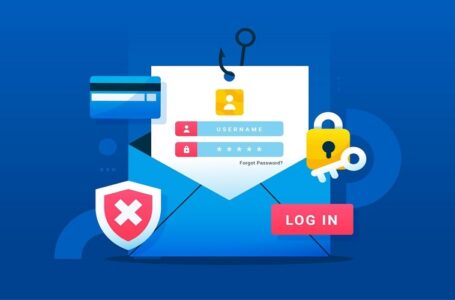Shirofune Enhances Shopify Integration with Google Analytics 4’s Data-Driven Attribution Model
6 LOCAL MARKETING STRATEGIES THAT WORK IN 2022

Want your brand or offering to be found by local audiences? Here are 6 great tips for local marketing strategies and tactics that work.
Through local offline and online marketing, you can connect with worthwhile leads.
To increase brand recognition and draw in new clients, you must create powerful local marketing techniques.
Regardless matter whether you are establishing a new business or currently have one, you need to have a digital marketing strategy.
The most important aspects of promoting a local business are digital and social media marketing since, as stated by Google, “83% of U.S. shoppers who visited a store in the last week say they used internet search before going into a store.”
Great Local Marketing Strategies For This Year
1. Optimize For Local Search
When someone searches for your company or related terms on Google, your business will show up immediately thanks to Google Business Profile (GBP).
That it is free is fantastic.
The searcher’s local area will be covered in the results, including your company’s location on Google Maps.
Create a profile with your company name, contact information, industry, etc. to get started.
Next, double-check your GBP listing.
Once authenticated, you can upload blogs, make offers, send and receive messages, add customer reviews, add photos and a bio, add customer reviews, and check analytics.
Additionally, it is really simple to update, so the information is always up to date.
You can take it a step further and establish a strong local link-building plan for the company.
By using citation sources like Yellowpages.com, you can inform Google about the location of your business.
Additionally, GBP has a fantastic feature that enables you to define the radius of services to a certain radius, like 10 kilometers. Regularly adding new articles or blog entries to your GBP account is crucial.
2. Local Reviews From Local Customers
The evaluations posted on the GBP listing are frequently the first thing customers notice because they are careful online consumers.
Customers in your neighborhood might see that you are a reliable company by reading a favorable review or recommendation.
That helps clients progress through the sales funnel and make a conversion or buy.
How do you then obtain reviews?
There are less obvious ways to encourage customers to leave favorable reviews, even though I don’t recommend outright asking for them and I certainly don’t recommend paying for them.
Negative feedback? No issue.
Negative customer feedback can be used to compile useful customer data.
By contacting the customer and making the necessary corrections, you can use the opportunity to change the negative review into a favorable one in addition to learning how to improve your products or customer experience (CX).
3. SEO Optimize Your Website
The next stage is to improve your website for organic search in order to introduce your brand and goods to the neighborhood market.
Keyword optimization is the primary method of doing it. While much of this will first seem obvious, you will quickly run out of creative ideas and will need to conduct keyword research.
Short-tail keywords are extremely competitive, and someone who has been in business longer than you is almost certainly already ranked for them. Therefore, concentrate on long-tail, localized keywords. Long-tail keyword users are the best because they typically know what they want (they aren’t tire-kickers), and they are more eager to interact.
Users of geo-specific keywords are aware of their preferred company locations. So let’s imagine you run a digital marketing agency that offers B2B marketing services to companies in a particular region.
To only optimize for “marketing” or “digital marketing” would be pointless. That vessel has left port! Instead, design pages for the website that are niche- and location-based and use long-tail keywords.
You might name a page or blog “Digital marketing for B2B companies in California” or “How B2B companies in California can profit from digital marketing,” for instance. You see what I mean. As a result, consumers looking for “digital marketing companies near me” will get results on search engine results pages (SERPs).
4. Create Localized Content
Inbound marketing and content marketing work together to draw in a certain audience.
According to our research, your target audience will interact with your material more frequently the more valuable, pertinent, and consistent it is.
But where do you even begin?
Make evergreen content that addresses your customers’ problems.
When it comes to producing quality content, there is no fast way. Write for people, do your research, and Google bots will enjoy it as well.
We adore long-form blogs, whitepapers, ebooks, infographics, videos, and “how-to” blogs for this reason (more than 900 words).
In this way, when potential customers are looking for answers, your material will assist them in finding your website.
In this case, when someone types in the long-tail phrase “best flowers for weddings,” Google displays advertising that is relevant to their search.
It also yields natural outcomes. The best part is that it generates “People also ask” (PAA) queries. Questions like “What is the typical price of flowers for a wedding?” are examples of this. Why not utilize these as a resource for original content concepts?
Such high-quality, SEO-rich content draws new users to your website and defines your company as the pioneer and expert in the field. By incorporating content marketing into your local web marketing strategy, your company will experience improved outcomes.
5. Review Your Website’s Design
The language and content that help search engines find your website are just as crucial as the way it looks and feels. However, your site’s design and user experience (UX) will retain visitors there while keywords will bring them to your page.
To make your localized organization more recognized, use images and videos on your website that make references to your region, neighborhood, and business. Additionally, the internet is developing at the same quick pace as customer needs. Your website, which was cutting edge in design when it was established five years ago, probably isn’t quite up to par today.
Perhaps it’s time for a revamp. The experience of your website’s visitors should be your first priority.
The site must be easy to use, easy to navigate, and easy to understand.
6. Integrate CRM Tool
Through the use of customer relationship manager (CRM) solutions, we can better grasp who our customers are.
Modern websites can integrate with the majority of CRMs. But how does your website send information about prospects to the CRM?
One is that you might think about including a pop-up on your website.
It might contain a request to join your newsletter, a link to a time-limited deal, or information about the debut of a new product.
Your lead generation landing pages will automatically update your CRM, such as HubSpot or Salesforce, when connected to one.
This not only fills your pipeline but also enhances first-party data and targeting, which enhances the effectiveness of your marketing messaging. Additionally, you can use your CRM to launch localized campaigns.
If the data has been captured appropriately in your CRM, you may quickly identify and segment clients and prospects by area.
Keep in mind that the result you produce will match the quality of the data you collect.
This can be utilized for area-specific email campaigns, customized invitations to in-person events and activations, etc.




